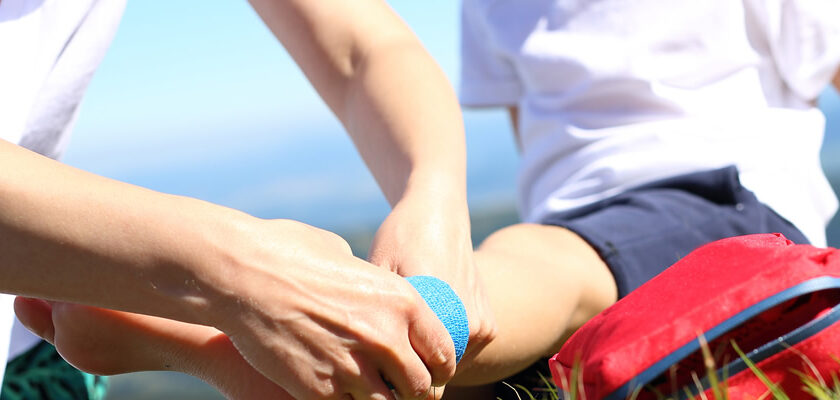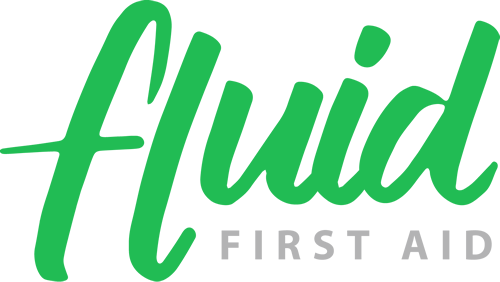The Fluid Learning News+
First Aid Tip: How to Treat a Snake Bite

In Australia, there are approximately 4000 bites and around two deaths each year from venomous snake bites. The minimal death rate from venomous snake bites is due to the application of the Pressure Immobilisation Technique used to Provide First Aid . When camping, hiking, or enjoying your outdoor adventures, you need to be vigilant and prepared for any circumstances that our great Australian outback and wildlife can throw at you. If you live in Australia, knowing First Aid for snake bites is key.
TYPES OF SNAKE BITES
There are two distinctive snake bites: Venomous snake bites and Dry snake bites.
A dry snake bite is when no venom is released. As recorded, venom is not released in 90% of snake bite incidents. Though these bites are still painful and may cause swelling and redness around the bite area.
A venomous snake bite can be life-threatening. The most commonly sighted venomous snakes in Australia include: Eastern Brown, Taipan, Tiger Snake, Death Adder, Copperhead, Mulga Snake, and Small-eyed Snake. However, it can be difficult to determine and identify the correct species of snake so bites should always be treated Venomous.
Major Symptoms of a Venomous Snake Bite
-
Major bleeding due to inability to clot blood
-
Nerve paralysis leading to respiratory muscle paralysis
-
Kidney failure due to microscopic blood clots
Other symptoms
-
bite site may only be a single mark or scratch
-
swelling, bruising or bleeding from the bite
-
swollen and tender glands in the armpit or groin of the bitten limb
-
nausea, stomach pain, or vomiting
-
headache
-
blurred or double vision
-
breathing difficulties
-
In serious cases; paralysis, coma, or even death
HOW TO TREAT
Call 000 as the first response to a snake bite.
Venom is injected beneath the skin and can spreads fast to the bloodstream through the lymphatic fluid. The lymphatic system moves this fluid into the lymph nodes and bloodstream through muscle movement therefore the priority is to minimise movement to help slow down the venom’s movement within the body. By using a Pressure Immobilisation Bandaging to immobilise the whole limb where the person was bitten.
Follow these First Aid steps to apply a Pressure Immobilisation Bandage
Follow these First Aid steps to apply a Pressure Immobilisation Bandage
| 1. Call 000 as the first response. | |
| 2. Don’t panic, and don’t move. Snake venom travels through the lymphatic system to the bloodstream. Lymph is a fluid in your body that contains white blood cells. Unlike blood, which is pumped around your body continuously, your lymph moves when you move your limbs. Therefore, staying calm and not moving can help slow down the venom’s movement in your body. | |
| 3. Put a pressure bandage over the bite itself. It should be tight, not allowing movement such as sliding a finger between the bandage and the skin, but without hindering blood circulation. | |
| 4. Use a heavy or elasticised roller bandage to immobilise the whole limb. Start just above the bite, then wrap until the whole limb is covered. E.g. for a bite on the arm or wrist, start just above the fingers and move upwards on the limb as far as the collar bone. | |
| 5. Splint the limb. Include joints on either side of the bite. | |
| 6. Keep the person and limb at rest. If it is possible, indicate the site of the bite with a pen on the exterior of the Pressure Immobilisation Bandage and monitor the casualty while you await emergency services. |
Get your premium snake bite bandage, with indicators that show when the correct level of compression is achieved, from Fluid First Aid or First Aid Kits Australia, or a Snake Bite Kit with added dressing, marker pen, and treatment guide.
If you can’t use a pressure immobilisation bandage because the bite is on the trunk or stomach, apply constant, firm pressure.
Paralysis
If the bite is venomous and the venom manages to travel to the bloodstream, it can have serious consequences on the nerves and respiration muscles which can then cause paralysis.
If a person is unconscious and NOT breathing normally or NOT breathing you must immediately provide CPR.
1. Roll them onto their back
2. Check there is nothing in their mouth and the airway is clear
3. Apply 30 compressions
4. Provide 2 breaths
5. Repeat compressions and breaths at a rate of 30:2 until help arrives or the casualty starts breathing
HOW TO PREVENT
During snake season it is important to always be aware of your surroundings and take the appropriate precautions. Snakes generally only bite humans if they are provoked, so steer clear and standstill to avoid aggravating the reptile if sighted.
-
Always be aware of your environment
-
Do not try to handle or kill a snake if you are not a professional
-
Wear long pants and covered shoes if walking in bushland, long grass, remote areas or gardening
For more information on First Aid Bites and Stings Treatment, see: First Aid Tip: How to Treat Bites and Stings
Author:Heber
Leave a Reply Cancel reply
You must be logged in to post a comment.
